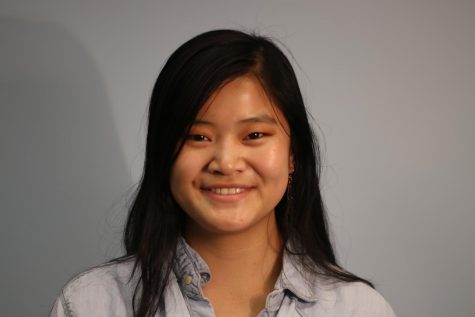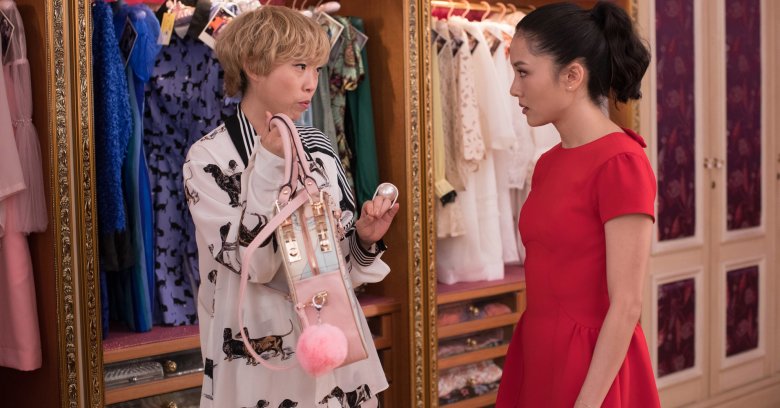Awkwafina, “Crazy Rich Asians” and minority misrepresentation
Addendum: This article was written and published almost two years ago, and I wanted to attach something to the article now speaking to the views presented here. Thinking back, this piece could have been worded far better, and it is more accurate to say that Awkwafina’s performance in “Crazy Rich Asians,” as well as the persona she has built, is irrevocably attached to Black culture. A better question to face and ask is, perhaps, why Asian rappers like both Awkwafina and Rich Brian (formerly Rich Chigga) see rap culture, and by some extension, Black culture in America, as a form of rebellion against traditional Asian values, and later on, something to profit from. In truth, Black culture has a history of being co-opted by other demographics and brought into the mainstream, only becoming acceptable after it has been divorced from its origins. I do not think it is my place to judge Awkwafina as innocent of exploiting Black culture, and ask readers to take the following article with a grain of salt. Thank you. 08/19/2020
“Crazy Rich Asians” has brought attention to the lack of people of color (POC) representation in Hollywood and also raised issues of misrepresentation and appropriation over actress and singer Nora Lum’s character, Goh Peik Lin.
Lum, better known by her stage name “Awkwafina,” has recently come under fire for her portrayal of Peik Lin, which many have called a caricature of black culture. Lum’s character acts as the support to Constance Wu’s Rachel, armed with an “urban” accent and a loud, American personality, which has been seen as an attempt to appropriate “the blaccent” and other aspects of black culture.
As a minority, Asian Americans are often considered the “model minority,” who generally experience less visible, less violent forms of racism. This myth of the “model minority” creates divides between people of color and raises questions of what racism looks like between POC populations. In Lum’s case, her performance can be seen as offensive and evocative of the stereotypical sassy black friend from late 1980s and 1990s films, which she gets away with because of Asian privilege as a model minority.
However, Lum’s performance seems of a different ilk than the many Asian performers who seek to build their careers upon creating personas based on black culture.
Rappers like Rich Brian, formerly Rich Chigga, clearly based their careers upon othering themselves from the Asian community and trying to embody a culture they neither belonged to nor fully understood. When comparing the songs that Rich Chigga produced to those from Awkwafina, the difference is clear. Almost all of Awkwafina’s songs deal with her as an Asian-American woman from New York. Where Lum speaks to her experiences as a POC, Rich Chigga avoids it, instead trying to be a black artist by creating a “gangsta” persona and using language meant for the black community.
While Rich Brian has since changed his stage name and his brand, his older music was clearly an attempt to break from the stereotype of Asians being uncool by trying to take on a black identity.
In contrast, Awkwafina’s career is entirely built upon her Asian-American identity. She both pokes fun and takes pride in the Asian-American experience through her alter ego, and she does not try to divorce her identity from her craft. Her performance in “Crazy Rich Asians” represents a contrast to the traditionalist socialites of Singaporean high society. As such, she does not appropriate black culture but represents an American in a predominantly traditionalist Asian society.
Lum’s character stands out as an Americanized member of the Singaporean elite, which makes her character feel less like a caricature of black culture and more like a representation of how American culture is perceived in traditional Asian cultures: loud, emotional, expressive and foreign.
Awkwafina’s portrayal of her character and her alter ego in her music is not the appropriation of another culture but a celebration of her own. She takes pride in her Asian-American identity, and represents American culture through the lens of high society Singapore in the film. While Asian privilege does exist to some extent, as seen with Rich Chigga’s success during his early years and other Asian-American artists appropriating black culture seemingly without repercussion, it is also clear how Asian Americans in the entertainment are often not taken seriously, with these incidents being written off as jokes in poor taste.
In order to truly open conversations on race between groups of POC, we need to open the discussion on what cultural appropriation truly is, especially as the word is used more and more to encompass many more situations. Without open discussion on the finer points of the topic, we can never bridge the gap between the various POC groups in America today, and controversies like these will only drive POC groups further apart.
“Crazy Rich Asians” has brought attention to the lack of people of color (POC) representation in Hollywood, but also raised issues of misrepresentation and appropriation over actress and singer Nora Lum’s character, Goh Peik Lin.
Lum, better known by her stage name “Awkwafina,” recently came under fire for her portrayal of Peik Lin, which many have called a caricature of black culture. Lum’s character acts as the support to Constance Wu’s Rachel Chu, armed with an “urban” accent and a loud, American personality, which has been seen as an attempt to appropriate “the blaccent” and other aspects of black culture.
As a minority, Asian Americans are often considered the “model minority,” which generally experiences less visible and violent forms of racism. This myth of the “model minority” creates divides between people of color, and raises questions of what qualifies as racism between POC populations. In Lum’s case, her performance can be seen as offensive and evocative of the stereotypical sassy black friend from late 1980’s and 1990’s comedies, which her privilege as a model minority allows her to get away with.
However, Lum’s performance seems of a different ilk than the many Asian performers who seek to build their careers upon creating personas based on black culture.
Rappers like Rich Brian, formerly Rich Chigga, clearly based their careers upon othering themselves from the Asian community and trying to embody a culture they neither belonged to or fully understood. When comparing the songs that Rich Chigga produced to those from Awkwafina, the difference is clear. Almost all of Awkwafina’s songs deal with her as an Asian American woman, particularly one who lives in New York. Where Lum speaks to her experiences as a POC, Rich Chigga focused on trying to be a black artist and using language that generally belongs to the black population.
While Rich Brian has since changed his stage name and his brand, his older music was clearly an attempt to break from the stereotype of Asians being uncool by trying to take on a black identity.
In contrast, Lum’s career as “Awkwafina” is entirely built upon her Asian-American identity. She both pokes fun and takes pride in the Asian American experience through her stage persona, and does not try to divorce her identity from her craft. Her performance in Rich White Asians is that of a supporting character for Constance Wu’s Rachel, and represents a contrast to the traditionalist socialites of Rachel’s fiance’s world. As such, she does not appropriate black culture, but represents an American in a predominantly traditionalist Asian society.
The film represents Chinese and Singaporean high society as a conservative one, which makes Lum’s character stand out as an Americanized member of their elite. Lum’s character feels less like a caricature of black culture, and more like a representation of how American culture is perceived in traditional Asian cultures: foreign, loud, emotional, and expressive.
Lum’s portrayal of her character and her alter ego in her music feels less like appropriation of another culture, but a celebration of her own. She takes pride in her Asian-American identity, and represents American culture through the lens of high society Singapore in the film. While Asian privilege does exist to some extent, with Rich Chigga achieving the success he did prior to his career shift and other Asian-American artists appropriating black culture seemingly without repercussion, it is also easy to see how Asian-Americans are often not taken seriously, with these incidents being written off as jokes in poor taste.
In order to truly open conversations on race between groups of POC, we need to open the discussion on what cultural appropriation truly is, especially as the term’s use expands. It is necessary for us to step back and define the finer points of cultural appropriation to improve dialogue and race relations between POC groups.
Caroline Zhu is a first-year computer science major with an interest in economics. She spends her time reading good literature and watching trashy movies or belting out eighties power anthems.

Caroline Zhu is a second-year computer science major with a deep and abiding love for Shakespeare. She spends most of her time arguing about the Oxford...


